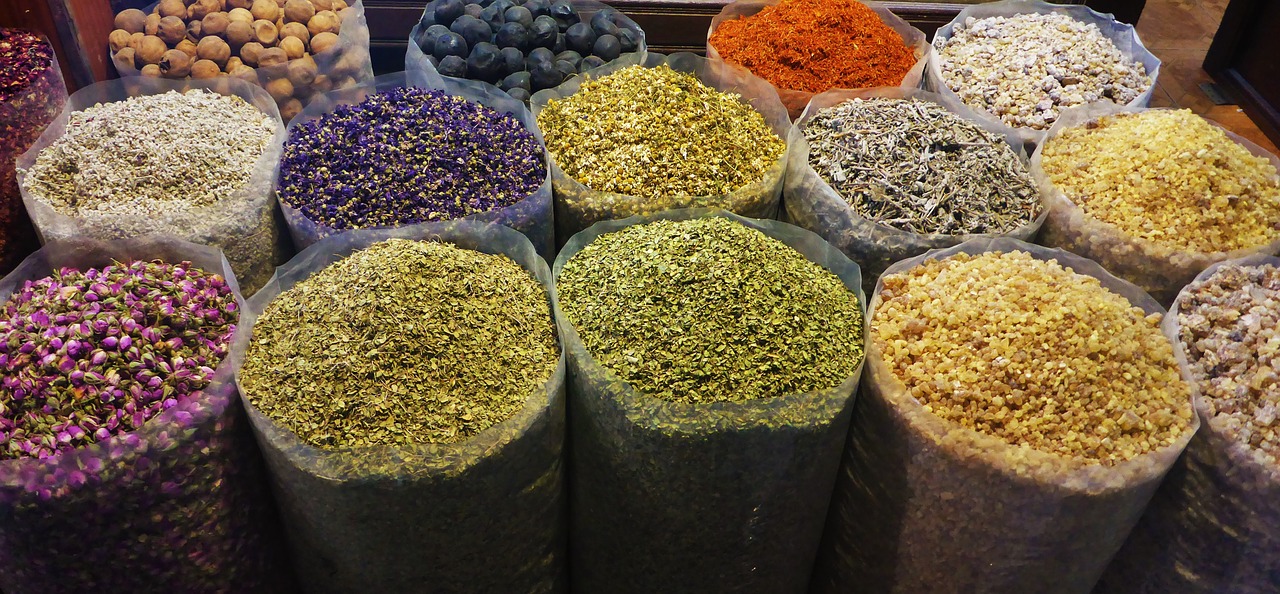From the sandy beaches of Zanzibar to the bustling markets of the Malabar Coast, entrepreneurs tore up the world in search of spices.
When they found cumin, nutmeg, ginger and paprika, consumers around the world went wild. Why? Because spices changed their boiled potatoes, cow hides and thin chickens into delicious savory dishes that sparkled in richness and flavor. The revelation for the palate was both sensational and devastating for people around the world.
Today the chases for spices no longer leaves vulnerable populations in colonial hands, but the joy in transforming food has not abated. Spices take up half an aisle in your typical grocery store, and a few self-service bins. Beyond salt, we have discovered a need to jazz food up to make the eating decision much more pleasurable.

Efficient Spicing
While typical recipes often call for precise spice measurements, efficient eaters have no time for measuring spoons. The idea of only allowing a precise amount of dusty powder in our food is too much of a restraint for someone with a business to run.
Not to mention, opening and closing all those spice bottles which can add precious minutes through added steps to meal preparation. Unfortunately, spices are by definition inefficient because there are so many different kinds, multiples can be used together in different dishes, and those bottles are either small and finicky or ginormous bulk varieties. Worse if you buy in bulk bags, you have to come up with some other smaller container transfer system or you risk having a mess on your hands every time you want a pinch of black pepper.
Experiment First
To include spices, which are essential for enjoying repetitive food and ensuring flavor after freezing and recooking, we recommend adding spices to taste – always. This means put in as much or as little as you want as you prefer depending on how it tastes to you, and whoever shares in the food you’re preparing.
The Efficient Eater should follow our meal ideas and experiment with how much spice to add each time.
When bulk cooking, you do not want to add any unknown spice to a pot full of two weeks worth of food. That’s way too much of a surprise to discover you do not like paprika on your chicken after you have cooked two weeks worth of chicken pieces!
[Ninga tip: you can in fact ‘wash off’ your cooked chicken and re-heat in a new sauce made of another spice. However, if the food has been sitting in the old spice for awhile, chances are the flavors have seeped through and you’ll be in for yet another big surprise, which or may not be a good thing.]
Unless you know how much you love a particular spice, do not add the entire bottle of something new all at once. Cook your bulk food without spices, then add your new addition to your own serving at each meal. Add or subtract the added amount as necessary for you to enjoy. You can even add a sprinkle or two to each spoonful to decide how the taste is changing, and finalize your decision in one meal. [That’s very efficient! Excellent!]
After ten or so iterations, you should have an idea of how much spice you can tolerate in one setting. For example, if you experimented up and down with a new spice over five meals, and settled on the amount used at meal five. Remember that amount, multiple the amount – one shake, one spoonful – by the number of meals you cook at one time, and you will have the amount of spice to add to the entire pot or baking dish the next time you cook.
Write it down if you think you’ll forget. Or put a little less if you’re still afraid. Once you know you like a particular spice with a particular food, you can go ahead and add it to the entire pot and continue to iterate.
Some suggestions
- Cumin – for chicken, turkey
- Black pepper – on everything, almost a staple after salt
- Garlic – on everything
- Ginger – for fish, seafood, lighter meals
- Mustard – often overlooked as a powdered spice, but adds a good kick to lighter foods like fish
- Oregano – for meat, pasta, dark vegetables
- Paprika – this spice is sweet ground red peppers so technically goes with everything. But sometimes too sweet for certain meals, but a good option if nothing else is available
- Red (chili) pepper – on everything
- Turmeric – for chicken, turkey, fish, vegetables – has taken on a cult-like status in recent times
For a break down of all the spices we know, and their recommended uses, see The Spice List (coming soon).
